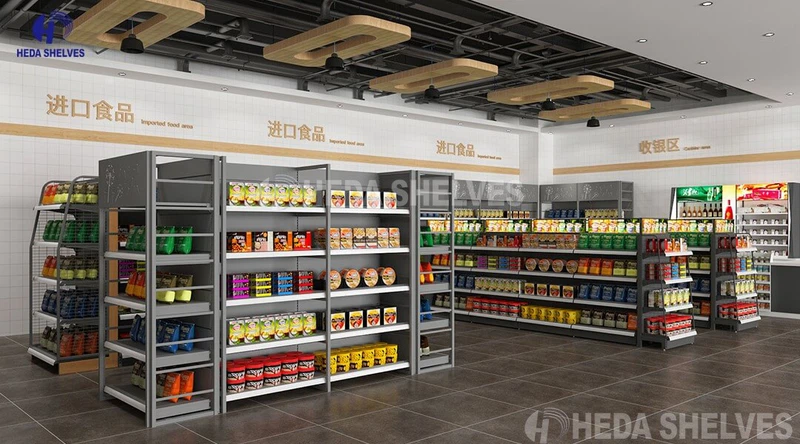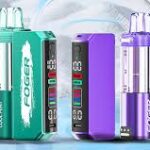When you walk into a supermarket, first impressions count. The moment your customers step across the threshold, their eyes scan the surroundings, and the right retail display fixtures signal quality, organisation and convenience. Your choice of fixtures plays a major role in guiding their journey through the store.
In environments where space, flow and visual impact really matter, choosing the correct setup for hypermarket display racks becomes even more significant. From gondolas to end-caps, each fixture influences visibility, product accessibility, and shopper behaviour. This blog explores what you need to consider when selecting retail display fixtures in a supermarket environment.
Understanding Your Store Environment
Before you invest in any fixtures, assess your store environment. What kind of supermarket layout do you have? What are your customer traffic patterns? What type of merchandise dominates your space?
Store Size & Floor Plan
Large stores with aisles and open spaces will have different fixture needs than smaller, neighbourhood supermarkets. In a larger space, you might need freestanding units; in a smaller footprint, you might favour wall-mounted shelving and compact racks.
Also consider ceiling height, lighting sources, and aisle width. These physical attributes will shape what fixtures are practical for you.
Customer Flow & Sight Lines
How do your customers move through the store? Are there natural routes from the entrance to the checkout? Research shows that product placement matters; for example, placing more visible items at eye level improves purchase likelihood. You want display fixtures that support your flow rather than impede it.
Merchandise Types & Weight Loads
What type of products will you display? Are they light packaged goods, heavy bulk items, or promotional displays? Some fixtures are designed for heavy loads (industrial racks) while others are for lightweight goods. Choosing the correct load-bearing capacity is as important as aesthetics.
Key Selection Criteria for Display Fixtures
Choosing the right fixtures can make or break your store layout. It’s not just about looks, it’s about functionality, durability, and customer experience.
Here are the essential factors to consider when selecting display fixtures for supermarket spaces:
Durability & Material Quality
One of the most overlooked factors is durability. Fixtures in supermarket environments are used constantly for stocking, restocking, customer interaction, and cleaning. If you choose flimsy materials, you face replacement, repair and downtime, which costs you.
- Look for heavy-duty steel or engineered components for high-traffic areas.
- Confirm finish quality, rust-resistance and ease of maintenance.
- Evaluate load ratings and shelf span capabilities.
Durable fixtures provide value over time rather than being short-term solutions.
Flexibility & Modular Design
Supermarkets face frequent change: seasonal promotions, product rotations and layout revisions. Therefore, modular, flexible fixtures offer major advantages. According to retail fixture guides, modular systems make reconfiguration easier and future-proof your investment.
Benefits at a glance
- Reconfiguration becomes quicker and cheaper.
- You can adapt to promotional changes or new merchandise ranges.
- Modular design aids efficient space utilisation, especially in dynamic retail spaces.
Visibility, Accessibility & Customer Engagement
How easily can a customer see and reach your products? That depends on how the fixtures are designed and where they are placed.
- Eye-level positioning: Most shoppers focus on items around waist to eye height.
- Clear aisle access: Avoid visual or physical clutter that obstructs sight lines.
- Highlight zones: Consider special units for promotions or bulk displays near high-traffic zones.
When customers find what they want quickly and the product is well presented, purchase likelihood increases.
Brand & Store Image Alignment
Your fixtures are an extension of your store’s brand and image. In a supermarket environment, this may not be about luxury, but about cleanliness, order, clarity and quality.
- Choose finishes and colours that match your brand aesthetic.
- Consistency matters: having a cohesive fixture style throughout helps create a professional feel.
- Don’t neglect signage, lighting and accessories which tie into the fixture’s look.
Safety, Compliance & Maintenance
In a busy supermarket setting, safety and ease of maintenance are important. Fixtures must meet local standards, be safe under load, and not pose hazards to staff or customers.
- Check for stability, anchoring options and compliance with safety codes.
- Consider cleaning and sanitation: open shelving might collect dust or debris; closed shelving may need more work.
- Ensure you can easily access consumables, lighting, or signage for updates or replacements.
Cost & Return On Investment (ROI)
While cost is always a deciding factor, you don’t want to choose the cheapest option if it fails quickly. Consider the total cost of ownership: purchase price, maintenance, lifespan, and potential sales lift.
- How many years will the fixture last?
- What is the expected stock turnover it supports?
- Will it help you increase the visibility of higher-margin items?
Balancing cost with value means you invest wisely rather than short-term.
Specific Considerations For Supermarkets
Because supermarkets combine many product types, high traffic, and frequent restocking, you’ll want to pay attention to some specialised concerns.
Load Capacity & Bulk Display Handling
Supermarkets often include bulk items, pallet displays, and heavy stock. So the display fixtures must be designed for these loads. Use fixtures rated for heavier weights, and ensure castors or skip-bins are used appropriately for mobility.
Promotional & End-Cap Strategies
End-of-aisle fixtures (often called end-caps) are high-visibility zones in supermarkets. Products placed here tend to sell faster. Choose fixtures designed for these locations: stable, prominently positioned, and easy for customers to engage with.
Hygiene, Cleanability & Food Safety
If your supermarket includes fresh produce, a bakery, a deli, or similar goods, cleanability matters. Fixtures must allow easy wiping, resist stains, and meet hygiene standards. Consider non-porous surfaces and designs that minimise hidden crevices.
Adjustability & Restocking Efficiency
With fatigue among retail workers, fixtures that ease restocking are a real advantage. Adjustable shelves, tool-free fittings, and accessible heights help. Also, fixtures that allow promotion signage attachments simplify seasonal changes.
Traffic Flow & Aisle Widths
Supermarkets often use a grid layout to maximise shelving. But you still need to consider customer comfort and accessibility. Fixtures too deep or tall can obstruct aisles or hamper visibility. Ensure that new fixtures do not hamper the smooth movement of trolleys, carts or customers.
Practical Steps Before Purchasing
Selecting the right retail display fixtures can feel overwhelming, but breaking the process into clear steps makes it manageable. Here are some practical steps you can take before finalising your purchase:
Conduct a Site Assessment
- Measure your floor space, ceiling height, and the footprint of any existing fixtures.
- Identify peak traffic times and the busiest zones, such as the checkout or entry areas.
- Map out the current customer flow and identify bottlenecks.
Define Your Fixture Requirements
- What merchandise types will you display? Bulky, lightweight, seasonal?
- What promotional zones do you need (end-caps, gondolas, wall racks)?
- Do you need mobility (castors, mobile bins) or fixed fixtures?
Specification Development
- Determine weight load requirements per shelf or module.
- Choose material specifications (steel, powder-coated finish, etc).
- Decide on modularity or a fixed structure based on your future layout plans.
Supplier & Product Evaluation
- Review sample fixtures to assess build quality and finish.
- Confirm modularity, flexibility, and reconfiguration features.
- Check warranty, lead time, installation requirements and maintenance.
Implementation & Testing
- Install prototypes or a pilot module in your store to test fit, flow and customer reaction.
- Monitor how customers use the fixture, how easily staff restock, and any operational issues.
- Use feedback to refine before full rollout.
Conclusion
Selecting the right retail display fixtures for supermarkets is much more than picking something that looks good. You need to align your choice with your store layout, product range, customer flow, brand aesthetics and operational demands. By focusing on durability, flexibility, visibility, brand alignment, safety and cost, you create a foundation for effective merchandising that supports business growth.
If you are ready to optimise your store’s display environment, begin with a clear assessment of your needs, work through a specification process and trial your fixtures before investing heavily. In doing so, you’ll make informed decisions that contribute to smoother operations, better customer experience and stronger sales.











